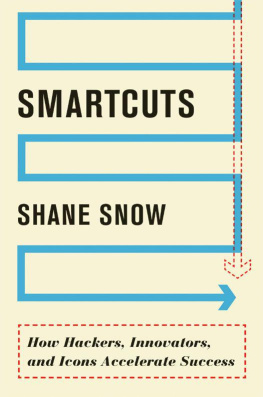
CONTENTS
O n a blustery winter morning in early 2007, Nathan Parkinson broke the world record for the fastest completion of the classic video game Super Mario Bros. I watched him do it.
We were in Rexburg, Idaho, a college town of 25,000 people, and Nate was definitely supposed to be in class. I emerged from my bedroom that morning, backpack in hand, to the usual sight. Blinds closed. Lights off. The unnatural glow from our 20-inch television in the corner. And Nate, about a foot away from the screen.
He would sit cross-legged, glasses fixed atop his nose, thin blond hair standing on end, held straight by weeks of oil buildup. His best friend and backseat driver, Tommy, would perch scrawny and shirtless on the armrest, after a night of snoozing rent-free on our couch in between turns at the game system.
Nate and Tommy routinely said good-bye to me at 8:00 a.m. as I left for Economics class, and I knew they still had an hour or two of GameCube left in them. But that day they were playing on an old-school Nintendo systemwhich was oddand that day Tommy had video recording equipment set up.
Nates trying to beat the world record for Mario one, Tommy informed me.
I sat down to watch.
BUNDLED WITH THE ORIGINAL Nintendo Entertainment System in 1986, Super Mario Bros. ushered in the modern video gaming era. With 40 million copies sold, it became a staple of 80s pop culture and held the honor of the worlds best-selling video game for two decades.
Super Mario Bros. has 32 levels, or missions, making up a total of eight worlds. Each world has new scenery, different obstacles, and progressively badder bad guys. Each level has a time limit of 400 game seconds, which are a bit shorter than actual seconds. In theory, the game should take between one and two hours to beat, assuming you dont die.
Until moves and timing are mastered, Mario is incredibly frustrating; touching a bad guy or falling into one of the countless pits spattering the landscape resets the level. After three chances, or lives, the game restarts.
At the time I sat down to watch Nate play the game, 22 years after its release, the standing world record for completing all the levels of Super Mario Bros. was 33 minutes, 24 seconds.
When Nate cleared the final level that day in Idaho, dumping the final boss, Bowser, into a pit of lava and signifying the end of the game, Tommys stopwatch read six minutes, 28 seconds.
Wait...
HOW DO YOU BEAT the worlds most played video game in one-fifth of world-record time?
As only someone who spent his or her childhood mashing red plastic buttons together might guess, the answer is Warp Pipes.
Throughout Super Mario Bros., Mario encounters a number of large green pipes. Some pipes are stopped up. Some pipes have evil plants living in them. And some pipes go to the sewer. Naturally, as a plumber, Mario likes to climb down these pipes, which lead to underground chambers where he can collect coins and mushrooms. The chambers invariably lead to more pipes, which take Mario back to the surface.
But the game creators also made a few secret pipes. These lead not to stinky sewers and disreputable fungi, but to new worlds, allowing Mario to skip levels by the dozen.
According to video game lore, these Warp Pipes were created so game testers could evaluate later levels without having to beat early worlds over and over again. Some, however, suspect these secret pipes were left as Easter eggs for fans to discover.
Nate didnt care about why the Warp Pipes were there; he just sent his Mario straight to them. He raced through Level 1-1, then broke a hole in the ceiling on Level 1-2 and ran full speed on top of the level, until he found the secret chamber with Warp Pipes to Worlds 2, 3, and 4.
Of course, Nate picked World 4.
Nates Mario kept running, pausing only to eat a power-up mushroom, so he could race past a pair of Hammer Brothers and survive (this gambit got him through the bad guys in half the time). Soon, he was climbing a secret vine that led to the Warp Pipe for World 8, which he then had to beat manually.
He beat it. By this point, Id scurried off to Econ, but I can only imagine the victory dance that ensued in our dingy apartment. After I came home and saw the tape, I promptly told everyone I knew.
Finishing Super Mario Bros. in six minutes using Warp Pipes isnt possible if you arent truly good at Super Mario Bros. The warp doesnt mean youre going to win, or that you deserve to. It just means you dont have to slog through stages you already know you can beat.
This is not a book about video games, or the ensuing drama after Nates record was sought, and overtaken, over the next few years.
This is a book about Warp Pipes in real life.
IT TOOK THE OIL tycoon John D. Rockefeller 46 years to make a billion dollars. He clawed his way to the top of the 19th-century business world. Starting with a single oil refinery in 1863, over two decades, he constructed oil pipelines and bought out rival refineries until hed built an empire.
Seventy years later, the 1980s computer baron Michael Dell achieved billionaire status in 14 years; Bill Gates in 12. In the 1990s, Jerry Yang and David Filo of Yahoo each earned ten figures in just four years. It took Pierre Omidyar, founder of eBay, three years to do it. And in the late 2000s, Groupons Andrew Mason did it in two.
Sure, theres been inflation since Rockefeller, but theres no disputing that weve decreased the time it takes innovative people to achieve dreams, get rich, and make an impact on the worldand this has largely been due to technology and communication.
A serious assessment of the history of technology shows that technological change is exponential, writes the futurist and author Ray Kurzweil in his famous essay The Law of Accelerating Returns. So we wont experience 100 years of progress in the 21st centuryit will be more like 20,000 years of progress (at todays rate). Here we come, Star Trek!
At the same time, many industries remain decidedly stuck in the past. Most large businesses stop growing after a few years. Formal education, in many cases, is so slow or out-of-date that venture capitalists pay bright people to skip school and start Internet companies. Conventional wisdomoutside of the technology industryon innovation and career building has hardly evolved since the 19th century.
Were multiplying our capabilities as a civilization and yet we still accept the notion that important societal progress, like combating inequality and crimeor even innovating in government and medicinemust take generations. Despite leaps in what we can do, most of us still follow comfortable, pre-prescribed paths. We work hard, but hardly question whether were working smart.
On the other hand, some among us manage to build eBay in the time it takes the rest of us to build a house. Pick your era in history and youll find a handful of peopleacross industries and continentswho buck the norm and do incredible things in implausibly short amounts of time. The common pattern is that, like computer hackers, certain innovators break convention to find better routes to stunning accomplishments.
The question is, can finding these better routes be taught?
PRETEND YOU ARE DRIVING a car in the middle of a thunderstorm and you happen upon three people on the side of the road. One of them is a frail old woman, who looks on the verge of collapse. Another is a friend who once saved your life. The other is the romantic interest of your dreams, and this is a once-in-a-lifetime opportunity to meet him or her. You have only one other seat in the car.
Next page








